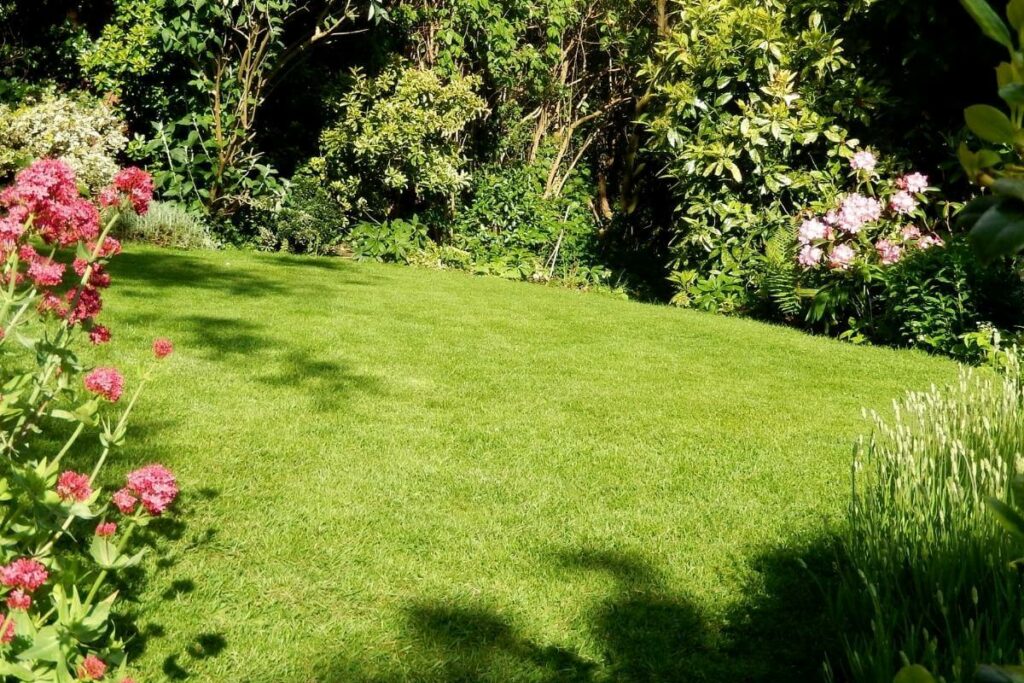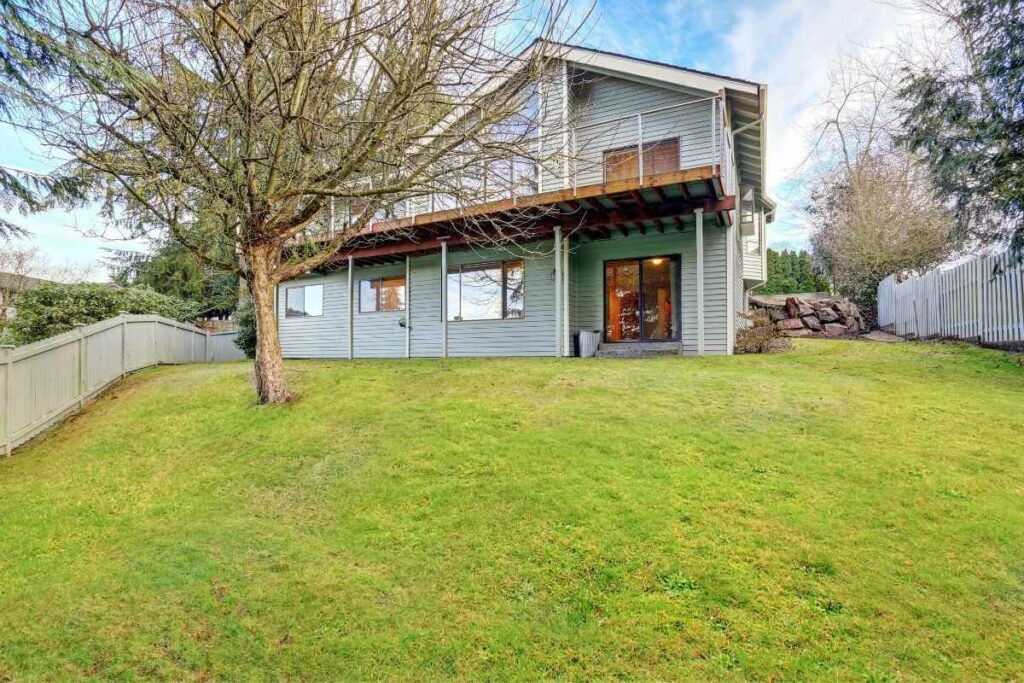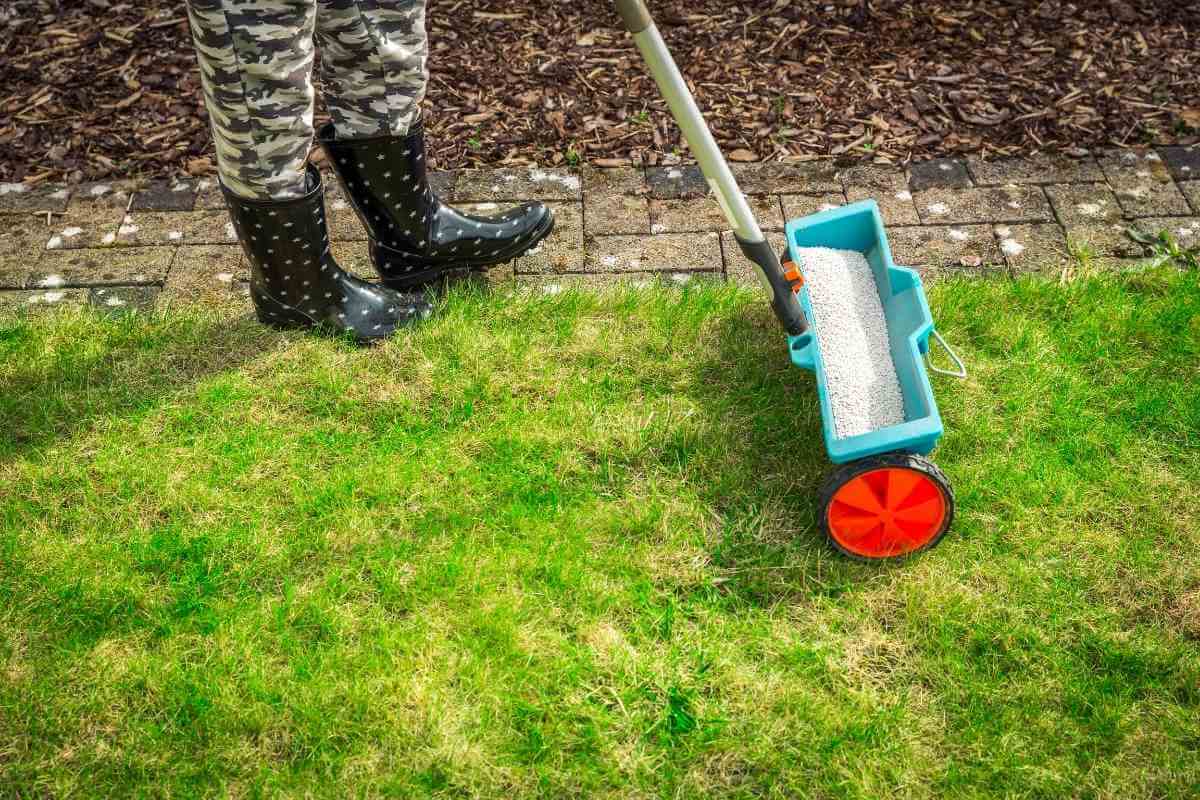Nobody likes being told what to do and when to do it.
When it comes to your lawn there are many things you should do and should not do.
Fertilizing your lawn in cold temperatures is on the “should not” list.

What temperature is too cold to fertilize your lawn?
Temperatures below 60-70 degrees Fahrenheit are too cold to fertilize your lawn. At these temperatures, your lawn enters a dormant state to protect itself from the cold. If you fertilize your lawn below these temperatures, you’ll feed the weeds instead, and the root growth of your lawn will be stunted.
Check The Soil
Far too many people assume that there is a magical day that you should apply your fertilizer.
Nor should people assume that just because the neighboring town has started to fertilize, that they should also start fertilizing their lawn.
Unfortunately, it isn’t that easy.

Weather conditions and temperatures can vary too much for there to be any universal “start fertilizing your lawn” day.
During the winter, your lawn enters a state of dormancy.
Think of it as plant hibernation; it had a good feeding in the fall, and now it’s going to sleep for the winter.
If you fertilize your lawn when it’s too cold, your lawn won’t have emerged from its dormant stage, so it won’t feed on the fertilizer you put down. The weeds, however, will love the fertilizer, and your lawn could be taken over by weeds.
Fertilizing when it is too cold can also promote shoot growth instead of root growth.
You’ll have a nice-looking lawn for a very short period of time, but if the roots don’t have a chance to develop well, your lawn will die quickly.

If you want to be sure you can safely add fertilizer to your lawn, use a combination of a soil thermometer and this soil temperature map.
Soil thermometers are easy to use. Insert the probe approximately 3 inches into the soil, and check it daily.
The soil temperature map is also easy to use, just enter your location and it will tell you the current soil temperature, the 24-hour average temperature, and the 5-day average temperature.
From Experience: By using both, you can avoid inaccuracies from daytime spikes with your soil thermometer, and inaccuracies from average area temperatures.
Different Types of Grass
The type of grass you have in your lawn will also determine how cold is too cold when fertilizing your lawn.
There are two types of grass:
- cool-season grass
- and warm-season grass
Chances are if you’re wondering what temperature is too cold to fertilize your lawn, you probably have cool-season grass.
Cool-season Grass
If you live in USDA Hardiness Zones 1-6, you might have cool-season grass. Not sure of your zone? Visit the Hardiness Zone section to determine your area.
Cool-season grass is much happier in, well, cool temperatures.

These grasses should be fertilized twice in the spring and twice again in the fall but left alone during the summer.
If you don’t have the time to fertilize your lawn four times a year, the best time to fertilize your lawn is in the fall.
Warm-season Grass
Warm-season grasses are very much the opposite. They can be found in USDA zones 7-10 and they thrive in hot weather.
Zones 7-10 are a little strange, in the sense that some of them may see temperatures below freezing, and others have hot temperatures all year long.
This is why “Fertilize Your Lawn Day” can’t exist.
When the soil temperatures are above 70 degrees, the lawn should be fertilized every 4-8 weeks.
If you don’t have the time to fertilize your lawn that often, the most important time to fertilize your lawn is in late spring.
Important Temperatures
| Degrees | Cool-Season Grasses | Warm-Season Grasses |
|---|---|---|
| 55 Degrees | Spring: This is when your grass starts growing. Apply fertilizer at this soil temperature. Fall: This is around the time your lawn will start going dormant. Apply fertilizer at this soil temperature. | Spring: Cool-season weeds start growing at this temperature. Do not fertilize. Fall: Your lawn will grow slowly, or become dormant at this temperature. Do not fertilize. |
| 65 Degrees | Spring: Your lawn will grow like crazy. Mow twice a week if you can. Fertilize at this soil temperature. Fall: After a warm summer, your lawn will start growing again. Fertilize at this soil temperature. | Spring: Your grass will begin to grow at this temperature. Apply fertilizer at this soil temperature. Fall: At this temperature, your lawn growth will begin to slow down. Apply fertilizer at this soil temperature. |
| 70 Degrees | These temperatures are too high to fertilize your soil. | Fertilize your lawn once every 4-8 weeks at these temperatures. |
| 80 Degrees | Give your lawn plenty of water to stop it from going dormant to protect itself from the heat and decrease how often you are mowing your lawn. These temperatures are too high to fertilize your soil. | Fertilize your lawn once every 4-8 weeks at these temperatures. |
Final Thoughts
At the risk of sounding bossy, do not fertilize your lawn in cold temperatures!
You will waste your fertilizer, promote weed growth, and stunt root growth.
Cool-season grass can handle being fertilized at soil temperatures around 55 degrees Fahrenheit, but leave it alone if it is colder than that!
And do not fertilize warm-season grasses when the soil temperature is below 65 degrees Fahrenheit.
